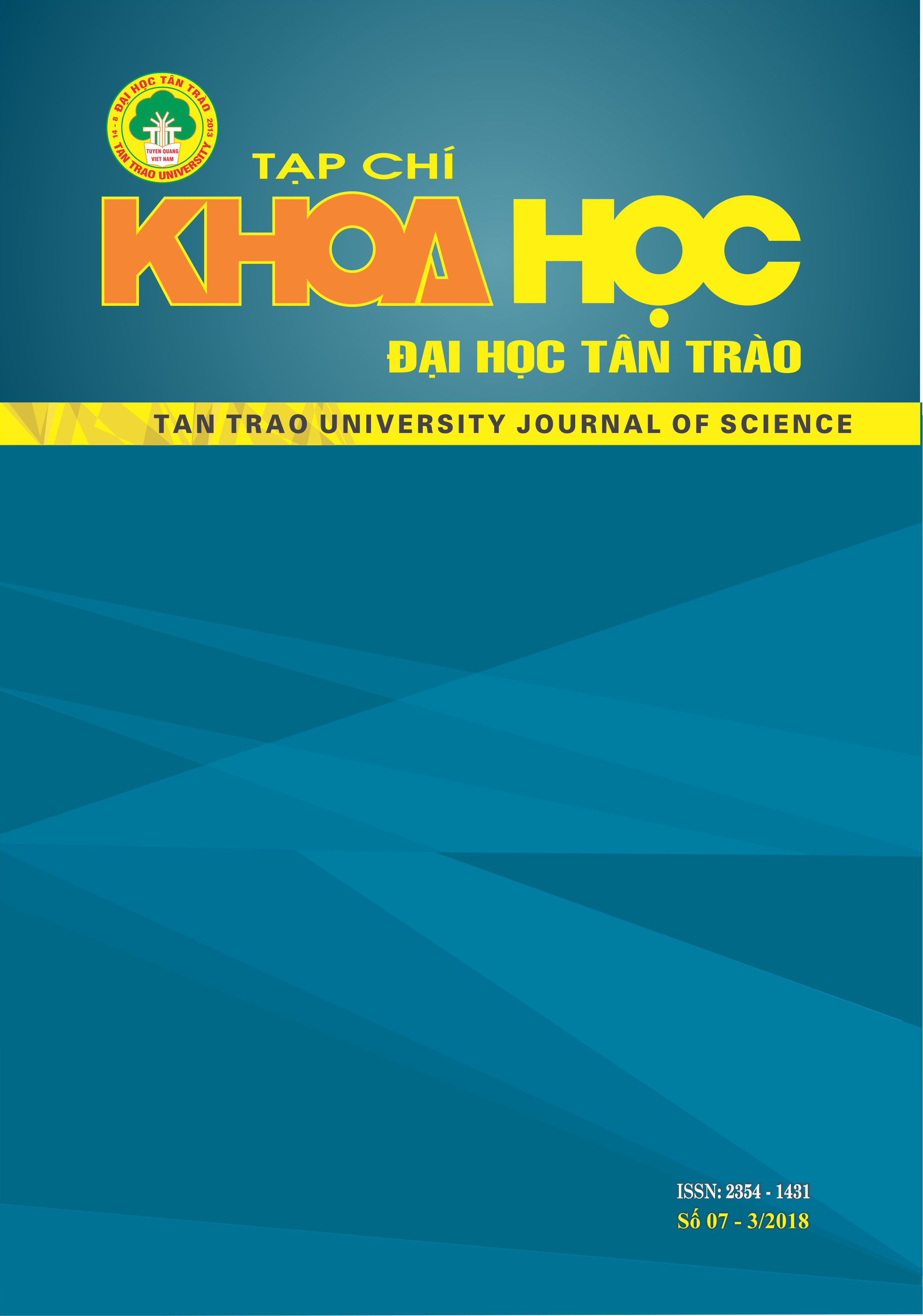Native aspects in decorative ironwork of Hanoi architecture in the period of French domination
DOI:
https://doi.org/10.51453/2354-1431/2018/148Keywords:
Decorative ironwork; native aspects; decorative architecture; Hanoi architecture in French domination.Abstract
Decorative ironwork in architecture components is one of important aspects that contribute to forming the appearance of Hanoi architecture in the period of French domination. In the period of second half of 19 century to the first half of 20 century, Decorative ironwork with lasting and artistic characteristics, had been parallel with the development of architecture trends in Hanoi. This had created a special phenomenon of art which imbued the native traditional spirit with the foundation of Western values.
Downloads
References
Henry R. D Allemagne, Decorative Antique Ironwork (Dover Jewelry and Metalwork), Dover Publications, New York, 2009;
Trần Quốc Bảo, Nguyễn Văn Đỉnh, Kiến trúc và quy hoạch Hà Nội thời Pháp thuộc, Nxb Xây dựng, Hà Nội, 2012;
Miranda Bruce, Mitford, Signs and Symbols, Schiffer Publishing, Ltd, 2008;
Trần Lâm Biền, Trang trí trong mỹ thuật truyền thống của người Việt, Nxb Văn hóa dân tộc, Hà Nội, 2001;
Trần Lâm Biền, Trịnh Sinh, Thế giới biểu tượng trong di sản văn hóa Thăng Long - Hà Nội, Nxb Hà Nội, Hà Nội, 2011;
Jean Chevalier, Alain Gheerbrant, Dictionary of Symbols, Penguin Books, Lon Don, 1997;
Đặng Thái Hoàng, Kiến trúc Hà Nội thế kỷ XIX – XX, Nxb Hà Nội, Hà Nội, 1985;
Trần Nhật Khôi, Giá trị của các công trình kiến trúc Pháp tại Hà Nội, Tạp chí xây dựng số 6, 2007 ;
Ana M. Lopez, Metalworking through History: An Encyclopedia (Handicrafts through World History), Greenwood, Lon Don, 2009;
Nhiều tác giả, Nghiên cứu mỹ thuật, Viện Mỹ thuật Hà Nội, 1992;
Phan Phương Thảo, Khu phố Tây ở Hà Nội nửa đầu thế kỷ XX qua tư liệu địa chính, Nxb Hà Nội, Hà Nội, 2017;
Trần Hậu Yên Thế, Song xưa phố cũ và những ghi chép bên lề, Nxb Thế giới, Hà Nội, 2013;
Nguyễn Đình Toàn, Những nhân tố tự nhiên và truyền thống văn hóa bản địa trong kiến trúc thời Pháp thuộc ở Việt Nam, LATS kỹ thuật, chuyên ngành kiến trúc nhà ở và công trình công cộng, 1998;
Trung tâm lưu trữ Quốc gia 1, Kiến trúc các công trình xây dựng tại Hà Nội (1875 – 1945), Nxb Thế giới, Hà Nội, 2014;
Trường Đại học Mỹ thuật Việt Nam – Viện Mỹ thuật, Nghệ thuật trang trí cổng làng Hà Nội nửa đầu thế kỷ XX, Tạp chí Nghiên cứu Mỹ thuật, (số tháng 12), tr 86 – 87, 2012;
Trần Quốc Vượng, Nguyễn Chí Bền, Tô Ngọc Thanh, Lâm Mỹ Dung, Trần Thúy Anh, Cơ sở văn hóa Việt Nam, Nxb Giáo dục, Hà Nội, 2002.
Downloads
Published
How to Cite
Issue
Section
License

This work is licensed under a Creative Commons Attribution-ShareAlike 4.0 International License.
All articles published in SJTTU are licensed under a Creative Commons Attribution-ShareAlike 4.0 International (CC BY-SA) license. This means anyone is free to copy, transform, or redistribute articles for any lawful purpose in any medium, provided they give appropriate attribution to the original author(s) and SJTTU, link to the license, indicate if changes were made, and redistribute any derivative work under the same license.
Copyright on articles is retained by the respective author(s), without restrictions. A non-exclusive license is granted to SJTTU to publish the article and identify itself as its original publisher, along with the commercial right to include the article in a hardcopy issue for sale to libraries and individuals.
Although the conditions of the CC BY-SA license don't apply to authors (as the copyright holder of your article, you have no restrictions on your rights), by submitting to SJTTU, authors recognize the rights of readers, and must grant any third party the right to use their article to the extent provided by the license.


